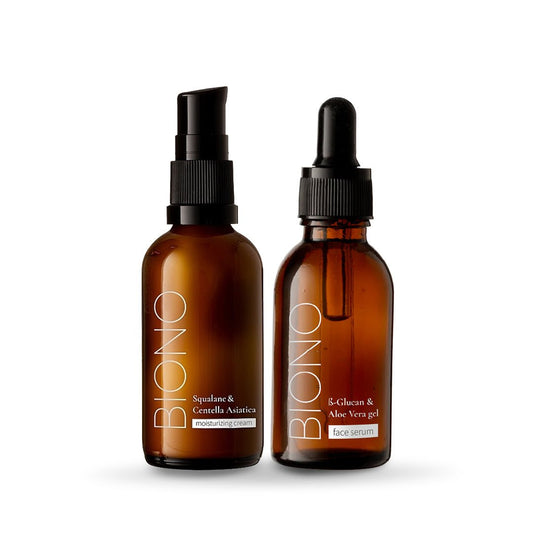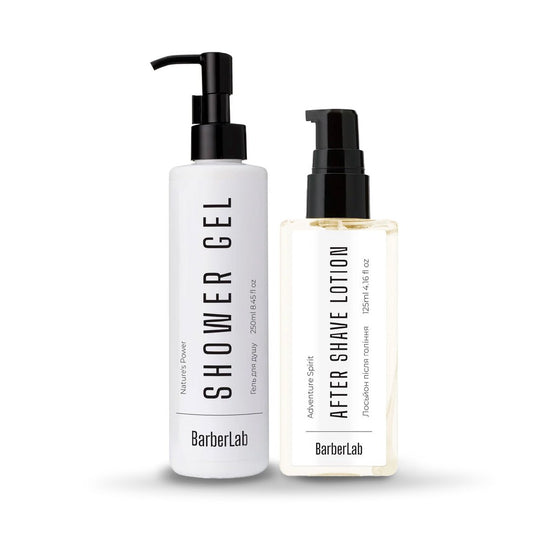
Effective facial skin diagnosis: how to correctly determine your type
Each of us dreams of healthy, radiant facial skin, but the path to this goal begins with understanding our own skin type. Facial skin diagnostics is not just a fashion trend, but a necessary step in creating the right care. Without an accurate definition of skin type, even the most expensive cosmetics may be ineffective or even harmful.
Our skin is the largest organ in the body, constantly interacting with the external environment and reacting to many factors: from weather conditions and nutrition to stress and the quality of cosmetics used. Accurate diagnosis of the skin condition allows you to choose the best care products that will work for you, not against you. In this article, we will consider the main methods of determining your skin type, share simple home tests and professional approaches to diagnosis that will help you better understand the needs of your facial skin.
Main facial skin types and their characteristics
Classical cosmetology distinguishes four main skin types, which can be identified through simple observations and tests. Understanding the characteristics of each skin type is the first step to correctly diagnosing the condition of your face.
Normal skin is considered the ideal type, characterized by balanced sebum production, optimal hydration, and an even tone. It has invisible pores, a smooth texture, and a healthy glow. People with normal skin rarely experience sensitivity issues or imperfections, and their skin easily adapts to environmental changes.
Dry skin is characterized by insufficient sebum production, which leads to a feeling of tightness, the appearance of peeling and early wrinkles. Owners of this skin type often notice roughness, redness and increased sensitivity to external factors. Diagnosis of dry facial skin is important for the selection of intensive moisturizing products that will help restore the lipid barrier and protect the face from negative influences.
Oily skin is characterized by excessive sebum production, which manifests itself in constant shine, especially in the T-zone, enlarged pores, and a tendency to form comedones and acne. With proper diagnosis and care, this skin type has its advantages - it ages more slowly and shows signs of age-related changes thanks to natural hydration and protection.
Home methods for testing your skin type
Determining your facial skin type can start with simple home tests that don't require special equipment or professional knowledge. Proper self-diagnosis is an affordable way to assess the condition of your skin at home.
The easiest way to test your skin type is to observe your skin after washing it. To do this, cleanse your skin with a mild cleanser, do not apply any makeup, and after an hour or two, assess how your skin feels and looks. If you feel tight and uncomfortable, this is a sign of dryness; if your skin looks shiny, especially around your forehead, nose, and chin, you probably have oily or combination skin.
The matting wipe test is another effective method for diagnosing your skin type at home. After thorough cleansing, wait a few hours, then apply a clean matting wipe or plain paper to different areas of your face. Based on the traces of oil left on the paper, you can draw conclusions: if oily traces are visible from all areas, you have oily skin; if only from the T-zone, you have combination skin; if there are almost no traces, you have dry or normal skin.
Assessing your skin's reaction to different cosmetics will also help in diagnosing your type. Pay attention to how your face reacts to moisturizers: if your skin becomes excessively shiny after applying them, this indicates an oily type; if the cream absorbs quickly and the feeling of comfort is short-lived, you probably have dry skin that needs more intensive nourishment.
Professional facial skin diagnostics in the salon
Although home tests can help you get a general idea of your skin type, for the most accurate diagnosis, you should consult a professional. Salon methods for determining your facial skin type allow you to take into account not only external signs, but also deep processes.
Hardware diagnostics of facial skin has become a real breakthrough in cosmetology. Modern equipment allows you to assess such parameters as the level of hydration of different layers of the epidermis, elasticity, oiliness, the condition of pores, the presence of pigmentation and hidden inflammatory processes. High-resolution digital images show the condition of the skin, inaccessible to ordinary visual observation, which allows you to detect problems at an early stage.
A professional consultation with a dermatologist or cosmetologist includes not only a visual examination, but also a detailed survey regarding lifestyle, nutrition, cosmetics used, and existing diseases. The specialist can determine not only the basic skin type, but also identify temporary conditions (dehydration, irritation) and associated problems (couperosis, rosacea, post-acne) that require a special approach to care.
Laboratory tests of facial skin, such as a biopsy or sebum analysis, are prescribed for complex dermatological problems. They allow you to determine the causes of chronic skin diseases, identify allergens or pathogenic microorganisms that cause problems. These diagnostic methods are used less often, but in some cases are indispensable for prescribing effective treatment and care.
Online tools for diagnosing facial skin type
In today's digital world, facial skin diagnostics have become more accessible thanks to the development of online technologies. While virtual methods cannot completely replace a professional consultation, they can be a useful additional tool for determining your skin type.
Specialized applications for facial skin diagnostics use artificial intelligence and computer vision technologies to analyze the user's selfie. Such applications are able to determine the level of oiliness, moisture, the presence of pigmentation, wrinkles and other signs, based on which they recommend skin type and appropriate care. The advantage of such applications is the ability to track the condition of the skin in dynamics, saving the history of changes and assessing the effectiveness of various skin care products.
Online consultations with cosmetologists have become a popular alternative to personal visits to the salon. Specialists analyze the client's photo, conduct a detailed survey about the skin characteristics and the products used, and then provide recommendations for skin type and optimal care. This format is especially convenient for initial diagnostics of facial skin or for monitoring the condition between salon visits, it saves time and allows you to get professional advice without leaving home.
Interactive skin type tests, available on specialized beauty websites, help determine the basic characteristics of the skin based on the user's answers to a series of questions. While such tests cannot take into account all the nuances and features of the skin, they give a general idea of its type and main problems. Use the results of an online facial skin diagnosis as a starting point for further research and consultation with professionals to get the most accurate assessment of the condition of your skin.
The influence of external factors on skin test results
When determining your facial skin type, it is important to understand that it is not static and can change under the influence of various factors. An accurate diagnosis must take these variables into account in order to create a truly effective care program.
Seasonal changes have a significant impact on the condition of facial skin. In summer, increased temperature and humidity can stimulate the sebaceous glands, which will lead to more oiliness even in people with normal skin type. On the contrary, in winter, central heating and cold air dry the skin, which can temporarily change its type from normal to dry. Proper diagnosis of facial skin must take into account these seasonal fluctuations, so it is recommended to conduct tests at different times of the year.
Hormonal changes have a significant impact on the condition of the skin, especially in women. During the menstrual cycle, pregnancy, menopause, or endocrine system diseases, changes in skin oiliness, sensitivity, and susceptibility to rashes may occur. Therefore, when conducting a skin type test, it is important to take your hormonal status into account and not draw final conclusions based on observations during periods of hormonal fluctuations.
Stress, lack of sleep and poor diet can temporarily alter the characteristics of your facial skin. Dehydration, excessive sugar, alcohol and caffeine consumption negatively affect the condition of your skin, making it more prone to dryness, inflammation and premature aging. To obtain the most accurate results of your facial skin diagnosis, it is recommended to perform the test during periods of relative well-being, when your body is not exposed to excessive stress.
Correction of care based on the results of skin diagnostics
A correct diagnosis of your facial skin type is only half the battle. It is even more important to be able to interpret the results and adapt your care regimen to the individual needs of your skin.
Facial cleansing should be selected according to its type: for oily skin, gels with salicylic acid are suitable, for dry skin, cream textures with an oil base, for normal skin, soft water-based foams. For combination skin, you can use different products for different areas or choose universal products with a balancing effect. Sensitive skin needs hypoallergenic products without fragrances and aggressive components.
Moisturizing is a mandatory step in facial care for all skin types, but the formulas of the products should be different. Oily skin is suitable for light gels with a mattifying effect, dry skin - rich creams with lipids and hyaluronic acid, normal skin - universal moisturizing emulsions. Based on the results of facial skin diagnostics, a cosmetologist may recommend multi-layered care, which includes serums with active ingredients and special masks to solve specific problems.
Sun protection is necessary regardless of skin type, but sunscreen formulas should be selected individually. For oily skin, light sprays and fluids with a mattifying effect are optimal, for dry skin - creams with additional moisturizing components, for sensitive skin - products with physical (mineral) filters, which are less allergenic. Properly selected sunscreen will help prevent not only photoaging, but also the exacerbation of many skin problems that may have been detected during diagnosis.
Combined approach to skin diagnosis and monitoring
The most effective strategy for fully understanding your skin type is to combine various facial skin diagnostic methods and regularly monitor changes. This approach allows you to create the most personalized care program possible.
A skin diary can be a valuable tool in diagnosing your skin type. Note how your skin behaves throughout the day, how it reacts to different skincare products, changes in the weather, stress, and diet. Over time, you will notice patterns that will help you better understand your skin’s needs and predict its reactions. This method is especially useful for identifying triggers that cause irritation or exacerbate problems in sensitive skin.
Consultations with different specialists can give a more complete picture of your skin condition. A dermatologist will assess your skin from a medical point of view, a cosmetologist from an aesthetic point of view, and a nutritionist can help you understand the impact of nutrition on your facial skin condition. By comparing the results of different diagnostic approaches, you will receive the most objective information about your skin type and ways to solve existing problems.
Seasonal correction of care is a logical consequence of regular diagnostics of facial skin. Understanding how your skin changes depending on the season, you can prepare for these changes in advance and adjust your care: replace light textures with more nourishing ones with the onset of cold weather, increase protection against UV radiation in the summer, add products with restorative components during periods of stress or illness. Such an adaptive approach to care provides the skin with constant support in optimal condition.
Conclusion
Diagnosing your skin type is not a one-time procedure, but a continuous process of observation and adaptation. Our skin changes with age, under the influence of seasonal factors, stress, nutrition and many other factors. By regularly conducting simple tests and observing the skin's reaction to various products and influences, you will be able to better understand its needs and provide the most effective care.
Remember that even the most accurate home diagnostics have their limitations, so to solve serious skin problems or create a comprehensive care program, you should contact professionals. Cosmetologists and dermatologists have modern methods of diagnosing facial skin, which allow you to see not only external signs, but also deep processes occurring in the epidermis and dermis.
Investing time and effort into proper skin diagnosis will pay off with a healthy appearance, solving existing problems, and preventing future ones. Listen to your skin, observe its reactions, and don't be afraid to adjust your care program according to the results. After all, the best care is the one that takes into account the individual characteristics of your skin and changes with it.













